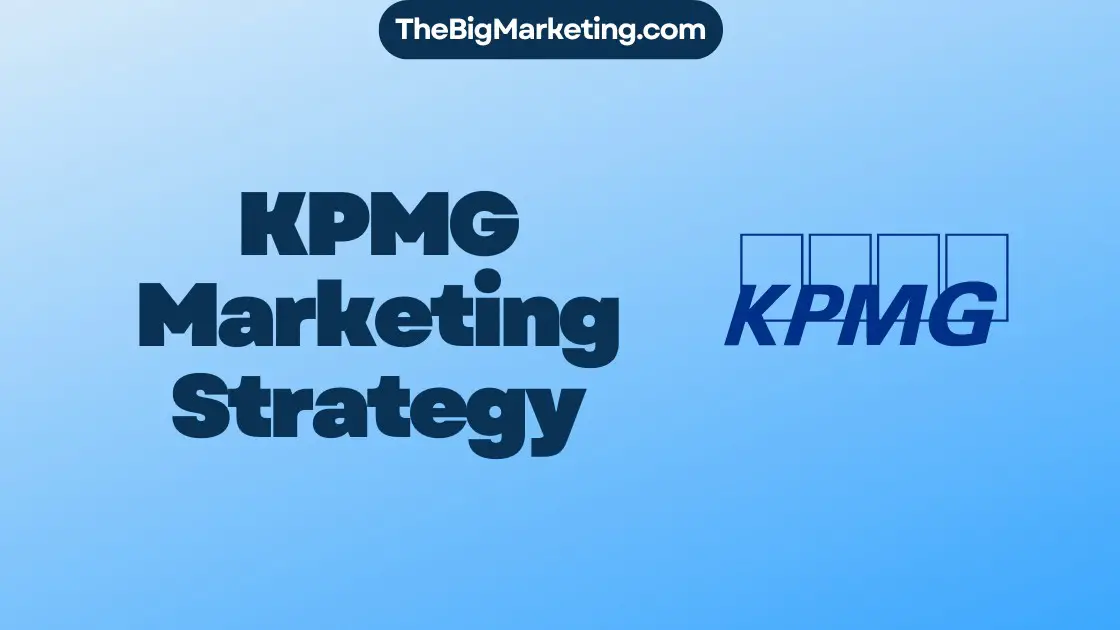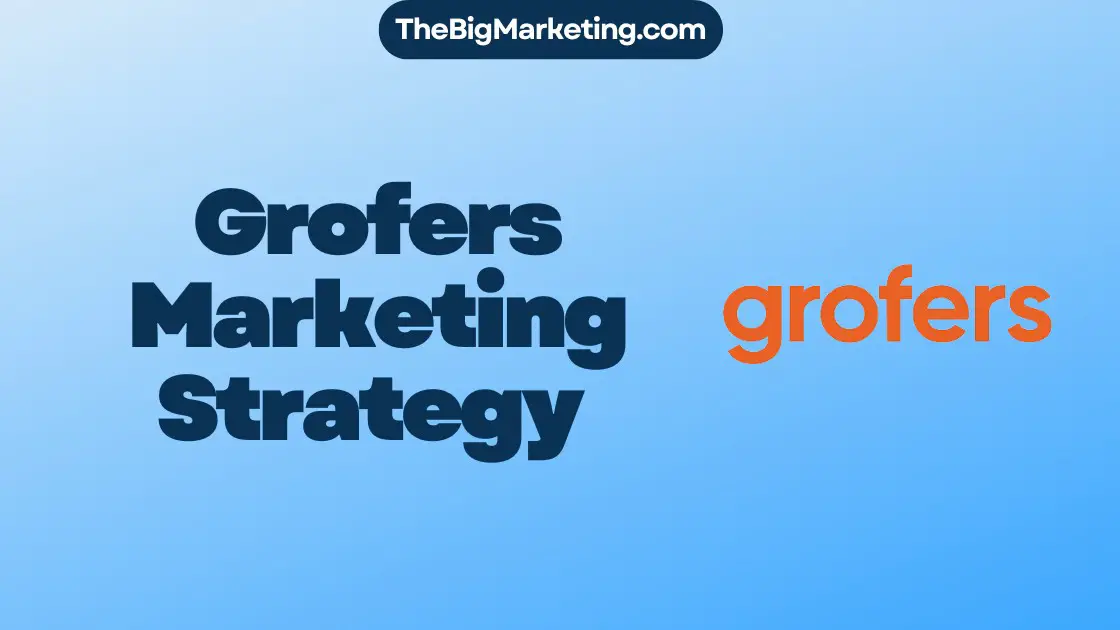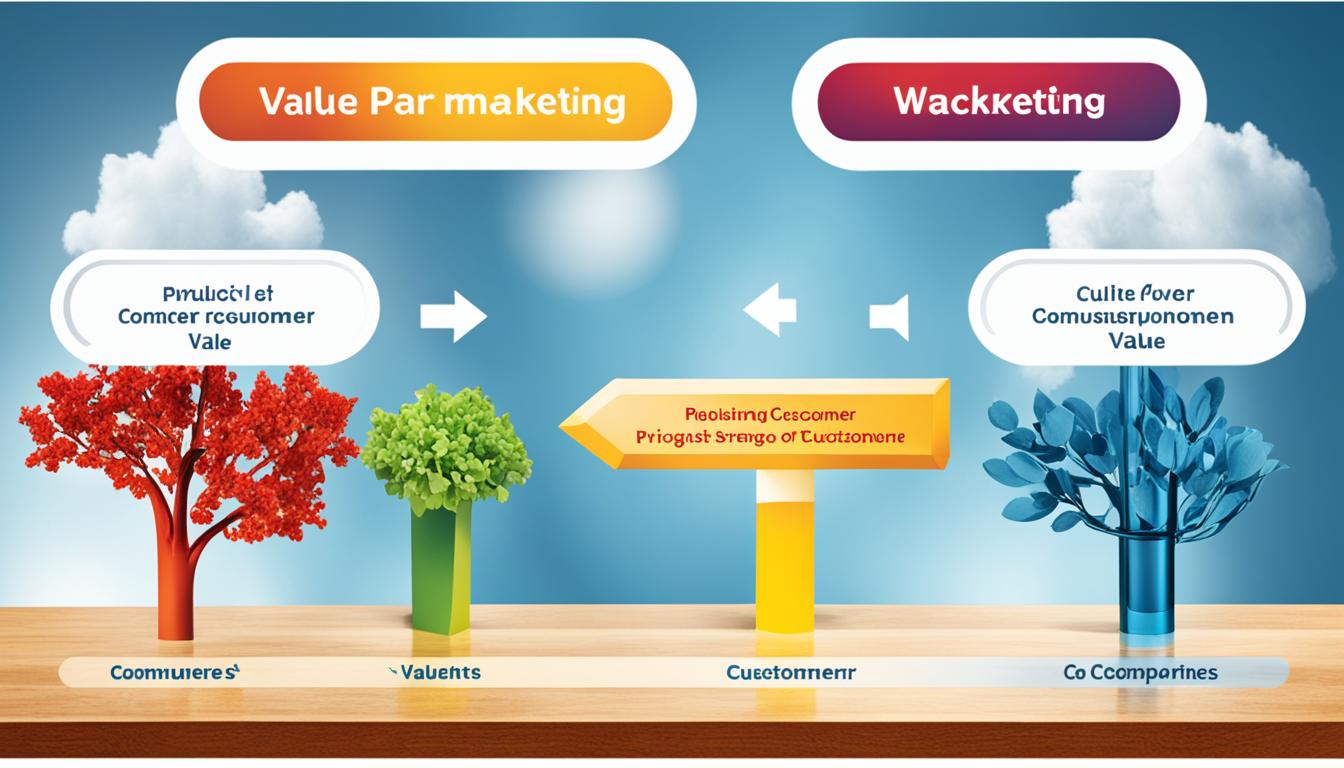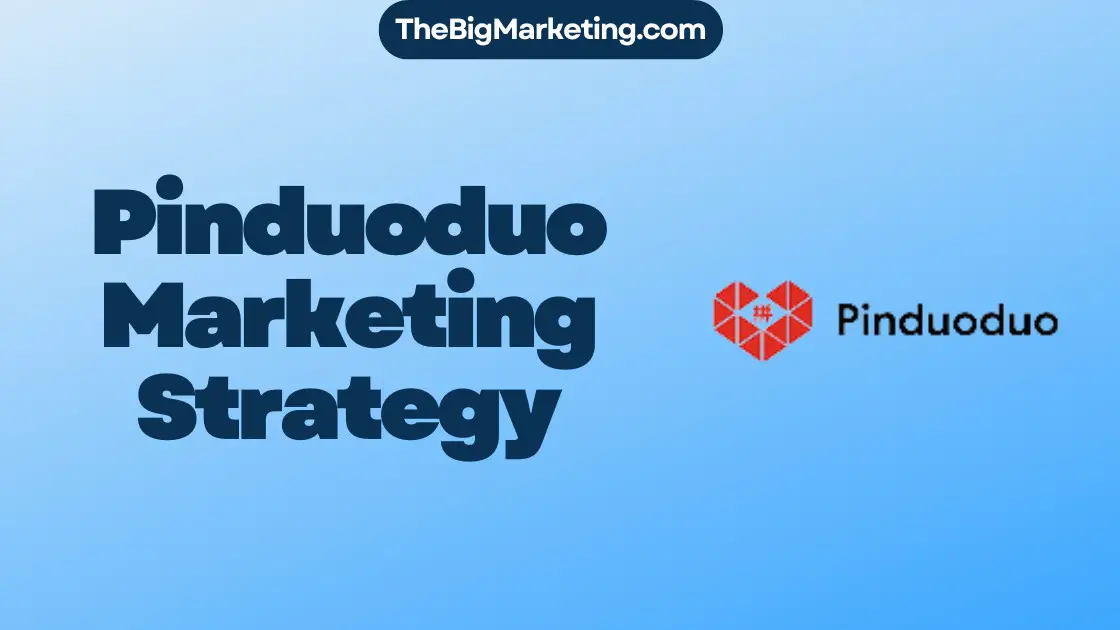The World Wildlife Fund (WWF) is a renowned international non-governmental organization (NGO) dedicated to the conservation of nature and the protection of wildlife. With a presence in nearly 100 countries, WWF collaborates with partners at local to global levels to sustain the natural world for the benefit of people and wildlife. Established in 1961, WWF focuses on wildlife conservation, sustainable development, and environmental protection. Its mission is to conserve nature and reduce the most pressing threats to the diversity of life on Earth. To achieve its goals, WWF employs a variety of marketing strategies, including digital marketing, corporate partnerships, and fundraising initiatives.
Key Takeaways:
- WWF is an international NGO dedicated to the conservation of nature and protection of wildlife.
- It operates in nearly 100 countries and collaborates with partners at various levels.
- WWF’s mission is to conserve nature and reduce threats to biodiversity.
- The organization utilizes digital marketing, corporate partnerships, and fundraising initiatives to achieve its goals.
- WWF’s marketing strategies aim to raise awareness, engage supporters, and drive action towards sustainability and conservation.
An Overview of WWF
The World Wildlife Fund (WWF) is a prominent international non-profit organization dedicated to nature conservation, wildlife protection, and sustainable development. With a presence in nearly 100 countries, WWF collaborates with partners at various levels to sustain the natural world and mitigate threats to biodiversity.
Established in 1961, WWF focuses on wildlife conservation, sustainable development, and environmental protection. Its mission is to conserve nature and ensure a sustainable future for both people and wildlife. In addition to its conservation efforts, WWF addresses pressing environmental issues such as climate change, deforestation, and the responsible use of resources.
WWF’s work extends beyond the protection of iconic species and habitats to encompass a holistic approach that aims to create a world where both nature and human society thrive. By working in partnership with governments, communities, and businesses, WWF strives to shape policies, drive sustainable practices, and raise awareness about the importance of protecting our planet.
Mission and Objectives of WWF
The World Wildlife Fund (WWF) has a clear mission to conserve nature and mitigate the most critical threats to the diversity of life on Earth. To achieve this mission, WWF has set forth a range of objectives that focus on biodiversity conservation, sustainable development, environmental advocacy, and education and awareness.
One of WWF’s primary objectives is biodiversity conservation, which involves protecting and restoring critical habitats and conserving endangered species. By safeguarding and nurturing diverse ecosystems, WWF aims to maintain the delicate balance of nature and preserve the incredible variety of life on our planet.
Another important objective for WWF is sustainable development, which encompasses promoting responsible resource management and advocating for policies that balance human needs with environmental protection. By encouraging sustainable practices and supporting communities, WWF aims to ensure a harmonious coexistence between humans and nature, fostering long-term prosperity.
Furthermore, WWF actively engages in environmental advocacy, championing the adoption and implementation of responsible policies at local, national, and global levels. Through strategic partnerships, research, and public awareness campaigns, WWF works to influence decision-makers and drive positive change for the environment.
Education and awareness play a crucial role in WWF’s mission, as the organization believes that informed individuals can make a significant impact. WWF aims to raise public awareness about conservation issues and inspire people to take action. By providing educational programs, resources, and engaging initiatives, WWF empowers individuals to make environmentally conscious choices in their daily lives.
Through the pursuit of these objectives, WWF aspires to create a world where nature thrives and biodiversity is protected for future generations. By conserving nature, promoting sustainable development, advocating for the environment, and fostering education and awareness, WWF strives to build a sustainable future that ensures the well-being of both people and wildlife.
WWF’s Mission and Objectives:
- WWF mission: Conserve nature and reduce threats to biodiversity.
- Biodiversity conservation: Protect and restore critical habitats and conserve endangered species.
- Sustainable development: Promote responsible resource management and advocate for sustainable policies.
- Environmental advocacy: Champion responsible policies and drive positive change through partnerships and awareness campaigns.
- Education and awareness: Raise public awareness, provide educational resources, and empower individuals to take action.
SWOT Analysis of WWF
WWF conducts a SWOT analysis to assess its internal strengths and weaknesses, as well as external opportunities and threats. This analysis helps WWF gain a comprehensive understanding of its current position in the conservation landscape and guides strategic decision-making.
WWF Strengths
WWF possesses several key strengths that contribute to its success in wildlife conservation and environmental advocacy. These include:
- Global Presence: With a presence in nearly 100 countries, WWF has a wide reach and can effectively execute its conservation initiatives worldwide.
- Established Reputation: WWF’s long-standing reputation as a trusted organization dedicated to nature conservation enables it to build strong partnerships and gain support.
- Collaborative Approach: WWF embraces collaboration and works with governments, communities, NGOs, and businesses to achieve its conservation goals.
- Scientific Expertise: WWF leverages scientific expertise to ensure its initiatives are evidence-based and grounded in sound ecological principles.
- Effective Communication Strategies: WWF excels in communicating its conservation message to a broad audience, utilizing powerful storytelling and impactful campaigns.
WWF Weaknesses
Despite its strengths, WWF also faces certain weaknesses that pose challenges to its operations and impact:
- Resource Limitations: Limited financial and human resources restrict WWF’s ability to address all conservation issues and implement large-scale projects.
- Complex Organizational Structure: WWF’s complex structure, which includes multiple national and international offices, can result in coordination challenges and slower decision-making.
- Adapting to Local Contexts: WWF operates in diverse cultural and social contexts, requiring adaptive strategies to address specific regional conservation challenges effectively.
WWF Opportunities
WWF identifies and capitalizes on various opportunities to further its conservation objectives:
- Technology Advancements: WWF can harness technological advancements, such as remote sensing and data analytics, to enhance monitoring and evaluation efforts.
- Partnerships: Collaborating with governments, businesses, and other organizations presents opportunities to leverage additional resources, expand influence, and drive meaningful change.
- Sustainable Development Goals: WWF can align its initiatives with the United Nations’ Sustainable Development Goals, creating synergies and amplifying impact.
WWF Threats
WWF faces various threats that pose challenges to its mission and conservation efforts:
- Global Environmental Challenges: Climate change, habitat loss, and pollution pose significant threats to biodiversity and ecosystems, requiring urgent action.
- Political and Economic Factors: Policy changes, political instability, and economic downturns can impact funding availability and political will for conservation efforts.
- Competition for Resources: WWF competes with other non-profit organizations for funding and resources, necessitating strategic positioning and effective fundraising initiatives.
By conducting a robust SWOT analysis and understanding its strengths, weaknesses, opportunities, and threats, WWF can develop targeted strategies to maximize its positive impact on wildlife conservation and environmental protection. With a focus on leveraging its strengths, addressing weaknesses, capitalizing on opportunities, and overcoming threats, WWF strives to create a sustainable future for the planet.
| Strengths | Weaknesses | Opportunities | Threats |
|---|---|---|---|
| Global Presence | Resource Limitations | Technology Advancements | Global Environmental Challenges |
| Established Reputation | Complex Organizational Structure | Partnerships | Political and Economic Factors |
| Collaborative Approach | Adapting to Local Contexts | Sustainable Development Goals | Competition for Resources |
| Scientific Expertise | |||
| Effective Communication Strategies |
WWF Marketing Campaigns
WWF is widely recognized for its exceptional marketing campaigns that deeply resonate with audiences and effectively communicate the urgency of protecting our planet. These emotionally impactful campaigns utilize powerful imagery and storytelling techniques to elicit strong emotional responses from viewers, inspiring them to take action and support WWF’s mission of conservation and sustainability.
One of the notable characteristics of WWF’s marketing campaigns is their collaborative approach. The organization actively engages scientists, stakeholders, and individuals worldwide to drive evidence-based decision making in both campaign development and evaluation. By working together, WWF ensures that their campaigns are rooted in scientific research and have a measurable impact on environmental awareness and conservation efforts.
Technological innovations play a crucial role in WWF’s marketing campaigns. The organization leverages remote sensing and data science to monitor environmental changes and collect valuable insights. By staying at the forefront of technology, WWF can effectively communicate the importance of sustainability and inspire individuals to make a difference in their daily lives.
WWF’s marketing campaigns serve as powerful tools to raise awareness about critical issues such as climate change, wildlife protection, and habitat conservation. By evoking strong emotional responses and utilizing innovative approaches, these campaigns successfully engage supporters and drive action towards building a sustainable future for generations to come.
Successful WWF Marketing Campaigns
WWF has a proven track record of creating impactful marketing campaigns that leave a lasting impression. These campaigns have been successful in raising awareness and inspiring action towards environmental conservation. By leveraging powerful imagery, storytelling techniques, and digital platforms, WWF has been able to engage millions of people worldwide and drive positive change.
Impactful Campaigns that Go Viral
One of WWF’s key strengths lies in its ability to create campaigns that go viral and captivate audiences across the globe. By leveraging emotionally evocative visuals and compelling narratives, these campaigns create a deep sense of connection and engagement. They raise awareness not only about the critical issues facing our planet but also about the role each person can play in making a difference.
Take, for example, the iconic WWF “Save Our Tigers” campaign. Through a powerful combination of stunning imagery and thought-provoking messages, the campaign aimed to highlight the urgent need to protect tigers from extinction. This impactful campaign not only captured the attention of millions but also led to increased support for tiger conservation efforts and raised environmental awareness to new heights.
Driving Engagement and Environmental Awareness
WWF understands the importance of engaging individuals and communities in environmental conversations. Their marketing campaigns are designed to not only raise awareness but also to inspire action. By eliciting strong emotional responses, these campaigns encourage individuals to make sustainable choices in their daily lives and become advocates for environmental conservation.
A prime example of a WWF campaign that drives engagement and environmental awareness is the “Earth Hour” initiative. Each year, millions of individuals around the world turn off their lights for one hour as a symbolic act to demonstrate their commitment to a sustainable future. This global movement, driven by WWF’s creative marketing efforts, has brought attention to the issue of climate change and generated immense support for energy conservation and environmental action.
Another successful campaign is the “#EndPlasticPollution” initiative, which aimed to draw attention to the harmful impact of plastic pollution on marine ecosystems. Through thought-provoking visuals, educational content, and calls to action, WWF encouraged individuals to reduce their plastic consumption and take steps towards a more sustainable future.
Overall, WWF’s successful marketing campaigns have not only raised awareness but have also inspired individuals, governments, and corporations to make a significant positive impact on the environment. By leveraging the power of storytelling, emotional connection, and digital platforms, these campaigns have transformed environmental awareness into action, creating a better future for our planet.
WWF’s Digital Marketing Strategy
As a leading non-profit organization dedicated to wildlife conservation and environmental protection, WWF understands the significance of digital marketing in reaching a wider audience and driving engagement. With a strong social media presence on platforms like Instagram, Facebook, and Twitter, WWF effectively shares updates, raises awareness, and mobilizes support for its initiatives. By harnessing the power of online campaigns, WWF encourages individuals to take action, whether it’s signing petitions or making donations.
Ensuring a seamless user experience is crucial to WWF’s digital marketing strategy. The organization optimizes its website to provide easy access to information about their initiatives, encouraging visitors to learn more and get involved. With a focus on website optimization, WWF aims to deliver a user-friendly interface that enhances engagement and drives meaningful interactions.
Social Media Presence and Engagement
WWF recognizes that social media platforms offer significant opportunities for reaching a diverse audience. By maintaining an active presence on Instagram, Facebook, and Twitter, WWF leverages these platforms to share captivating content, compelling stories, and impactful visuals. This approach not only raises awareness about the importance of wildlife conservation but also fosters engagement and encourages individuals to support WWF’s mission.
Online Campaigns for Action
WWF implements online campaigns to mobilize individuals and inspire action. Through thoughtfully crafted campaigns, the organization encourages people to participate in meaningful ways, such as signing petitions or making donations. By leveraging digital platforms, WWF maximizes its reach and creates a sense of urgency, empowering individuals to contribute to the cause.
Website Optimization for User Experience
A user-friendly website is essential for providing visitors with easy access to relevant information and encouraging them to actively engage with WWF’s initiatives. By optimizing its website, WWF ensures that users can navigate seamlessly, find valuable resources, and take action. The organization prioritizes responsive design, intuitive navigation, and accessible content to deliver an exceptional user experience that supports its conservation efforts.
Corporate Partnerships for Conservation
The World Wildlife Fund (WWF) actively seeks partnerships with corporations to drive sustainable business practices and contribute to conservation efforts. By collaborating with the private sector, WWF can leverage resources, influence industry practices, and create positive environmental change.
These corporate partnerships involve collaborations on various initiatives, including:
- Resource Management
- Renewable Energy
- Responsible Production and Consumption
WWF works closely with businesses to develop sustainable strategies that reduce their environmental impact and support nature conservation. Through these partnerships, WWF aims to promote the adoption of sustainable business practices that benefit the planet and its biodiversity.
By engaging the private sector in conservation efforts, WWF not only gains access to additional resources but also enhances its ability to influence and shape industry practices towards sustainability. Through these collaborations, WWF creates a platform for knowledge sharing, innovation, and collective action.
WWF believes that corporate partnerships play a crucial role in driving sustainable development and fostering a more environmentally conscious business sector. By working together, WWF and its corporate partners can contribute significantly to the conservation of our planet for future generations.
Example of a Corporate Partnership: WWF and The Coca-Cola Company
One prominent example of a corporate partnership for conservation is the collaboration between WWF and The Coca-Cola Company. The partnership focuses on water stewardship, sustainable sourcing of agricultural commodities, and climate mitigation efforts.
| Initiative | Description |
|---|---|
| Water Stewardship | WWF and The Coca-Cola Company collaborate to conserve freshwater resources, protect watersheds, and improve wastewater treatment. |
| Sustainable Sourcing | The partnership aims to promote sustainable agriculture and responsible sourcing of key commodities, such as sugarcane and tea. |
| Climate Mitigation | WWF and The Coca-Cola Company work together to reduce greenhouse gas emissions, promote renewable energy, and develop low-carbon solutions. |
Through this partnership, WWF and The Coca-Cola Company are striving to make a positive difference in the areas of water conservation, sustainable agriculture, and climate change. By joining forces, they can achieve more significant impact and contribute to the creation of a sustainable future.
Fundraising Initiatives for WWF
As a non-profit organization dedicated to nature conservation and wildlife protection, WWF heavily relies on fundraising initiatives to support its crucial conservation efforts. With the goal of generating the necessary financial resources, WWF employs various strategies to engage supporters, encourage donations, and organize impactful fundraising campaigns.
One of the primary fundraising methods utilized by WWF is organizing fundraising campaigns that raise awareness, drive action, and mobilize individuals to contribute to the cause. These campaigns leverage WWF’s extensive network of supporters and partners, creating a sense of community and inspiring collective efforts towards a sustainable future.
In addition to campaign-based fundraising, WWF establishes partnerships with individuals, corporations, and foundations to secure additional financial support. By collaborating with like-minded organizations and individuals, WWF expands its reach and pool of potential donors, thus facilitating sustainable funding for its conservation projects.
WWF also places great emphasis on cultivating a loyal community of supporters who contribute through regular donations. These supporters form the backbone of WWF’s fundraising efforts, providing ongoing financial assistance that underpins the organization’s ability to implement impactful conservation projects and support scientific research.
Through its diverse fundraising initiatives, WWF aims to generate the necessary resources to implement conservation projects, protect endangered species, restore critical habitats, support scientific research, and raise awareness about the pressing environmental issues we face today. By mobilizing supporters, engaging in partnerships, and organizing fundraising campaigns, WWF is able to make a significant impact in preserving our planet’s biodiversity and promoting a sustainable future.
Impact Measurement and Evaluation
WWF understands the significance of impact measurement and evaluation in assessing the effectiveness of its initiatives and programs. By utilizing evidence-based data, monitoring and evaluation techniques are employed to measure the impact of conservation projects, track progress towards goals, and inform evidence-based decision making. The objective is to ensure that WWF’s efforts produce tangible results and contribute to positive environmental change.
The organization recognizes that impact measurement goes beyond simply tracking numbers. It entails understanding the outcomes and long-term effects of conservation projects and initiatives. By gathering comprehensive data and insights, WWF can assess the effectiveness of its strategies and make informed decisions to adapt and improve its approaches.
Monitoring and evaluation play a crucial role in guiding WWF’s conservation efforts. Through rigorous data collection, analysis, and interpretation, the organization can identify what works well, what needs improvement, and what can be scaled up for maximum impact. This evidence-based approach enables WWF to allocate resources efficiently and prioritize actions that will yield the greatest overall benefit for nature and wildlife conservation.
Evidence-Based Decision Making
WWF’s commitment to evidence-based decision making ensures that its strategies and actions are rooted in sound data and analysis. By leveraging rigorous monitoring and evaluation processes, WWF can evaluate the impact of its initiatives, identify best practices, and make informed decisions about resource allocation and future projects. This evidence-driven approach enhances transparency, accountability, and effectiveness in the organization’s conservation efforts.
Evidence-based decision making enables WWF to assess the cost-effectiveness of its interventions and identify areas for improvement. By continuously learning from the outcomes of its initiatives, WWF can adapt its strategies and methodologies to address emerging challenges and optimize impact.
Overall, impact measurement, monitoring and evaluation, and evidence-based decision making are essential components of WWF’s approach to conservation. These practices not only ensure accountability and transparency but also provide valuable insights that drive continuous improvement and enhance the organization’s ability to protect nature and wildlife for future generations.
Public Awareness and Education Initiatives
WWF recognizes the crucial role of public awareness and education in driving behavior change and fostering environmental responsibility. As part of its mission to conserve nature and protect wildlife, WWF actively conducts a range of outreach programs, educational initiatives, and campaigns to raise awareness about pressing conservation issues and empower individuals to make sustainable choices.
Education Programs and Outreach
WWF designs and implements diverse education programs aimed at different age groups, from schools to community centers and online platforms. These programs provide valuable knowledge about the importance of biodiversity, the consequences of habitat destruction, and the need for sustainable resource management. By fostering a deeper understanding of environmental issues, WWF aims to inspire individuals to take action and make informed decisions in their daily lives.
Through strategic partnerships with educational institutions, WWF develops curriculum materials and resources that align with academic standards. These materials cover a wide range of topics, from climate change and species conservation to sustainable development and responsible consumption. By integrating these materials into formal education systems, WWF ensures that environmental education becomes an integral part of the learning experience.
Public Awareness Campaigns
WWF leverages its extensive network and influential partnerships to launch powerful public awareness campaigns. These campaigns aim to capture the attention of millions of people worldwide and spark conversations about environmental issues. By utilizing various media channels, including television, radio, social media, and outdoor advertising, WWF ensures that its messages reach a wide and diverse audience.
WWF’s public awareness campaigns are designed to create an emotional connection with the audience, evoking empathy and inspiring action. Through impactful visuals, compelling storytelling, and thought-provoking messages, these campaigns encourage individuals to join the movement for conservation and embrace their role in protecting the planet. By raising public awareness, WWF hopes to drive widespread support and catalyze positive change.
Engagement and Behavior Change
WWF places a strong emphasis on engaging individuals and motivating behavior change. Alongside its public awareness initiatives, WWF provides practical resources and tools that help individuals adopt more sustainable habits and reduce their environmental footprint. These resources encompass a range of topics, such as energy and water conservation, waste reduction, sustainable food choices, and responsible tourism.
Through interactive websites, mobile apps, and social media campaigns, WWF empowers individuals to make environmentally conscious decisions in their daily lives. By offering practical solutions and highlighting the positive impact of behavior change, WWF inspires a sense of environmental responsibility and encourages individuals to become agents of change in their communities.
With its wide reach, influential partnerships, and evidence-based approach, WWF believes that public awareness and education are instrumental in creating a more sustainable future. By providing the information, resources, and inspiration needed for meaningful action, WWF strives to mobilize millions of people worldwide to embrace their role in conservation and contribute to a healthier planet.
Conclusion
WWF’s Marketing Strategy 2024 has greatly contributed to the conservation impact and sustainable future envisioned by the organization. Through its innovative approach to marketing, WWF has successfully raised awareness about wildlife conservation, promoted sustainable development, and created a greater sense of environmental responsibility.
By using impactful campaigns, WWF has effectively engaged supporters and inspired them to take action towards a more sustainable future. The organization’s digital marketing efforts have amplified its reach and allowed it to connect with a wider audience, spreading its message of conservation across the globe.
Furthermore, WWF’s strategic corporate partnerships have facilitated the implementation of sustainable business practices and resource management, while fundraising initiatives have provided the necessary financial resources to support conservation projects and research. WWF’s commitment to measuring the impact of its initiatives and continuously evaluating its strategies ensures that resources are used efficiently and effectively.
Looking forward, WWF remains dedicated to its mission of preserving nature and ensuring a sustainable future for generations to come. Through its marketing strategy and collaborative efforts, WWF aims to create a world where the diversity of life thrives, the environment is protected, and the benefits of nature are enjoyed by all.








